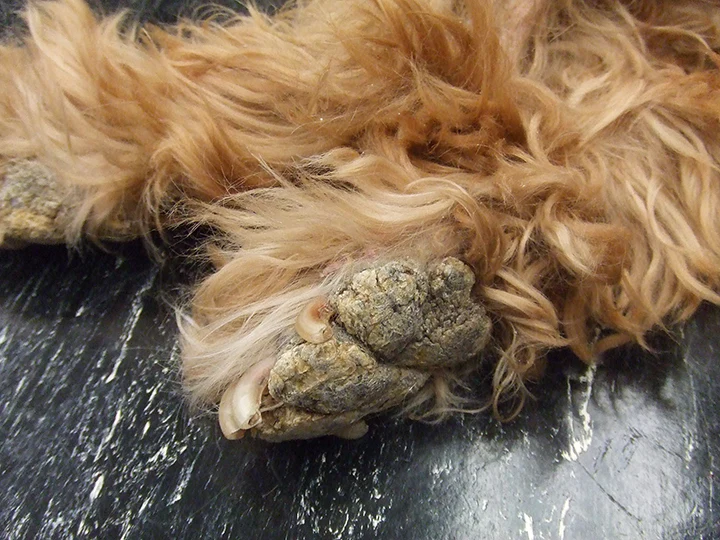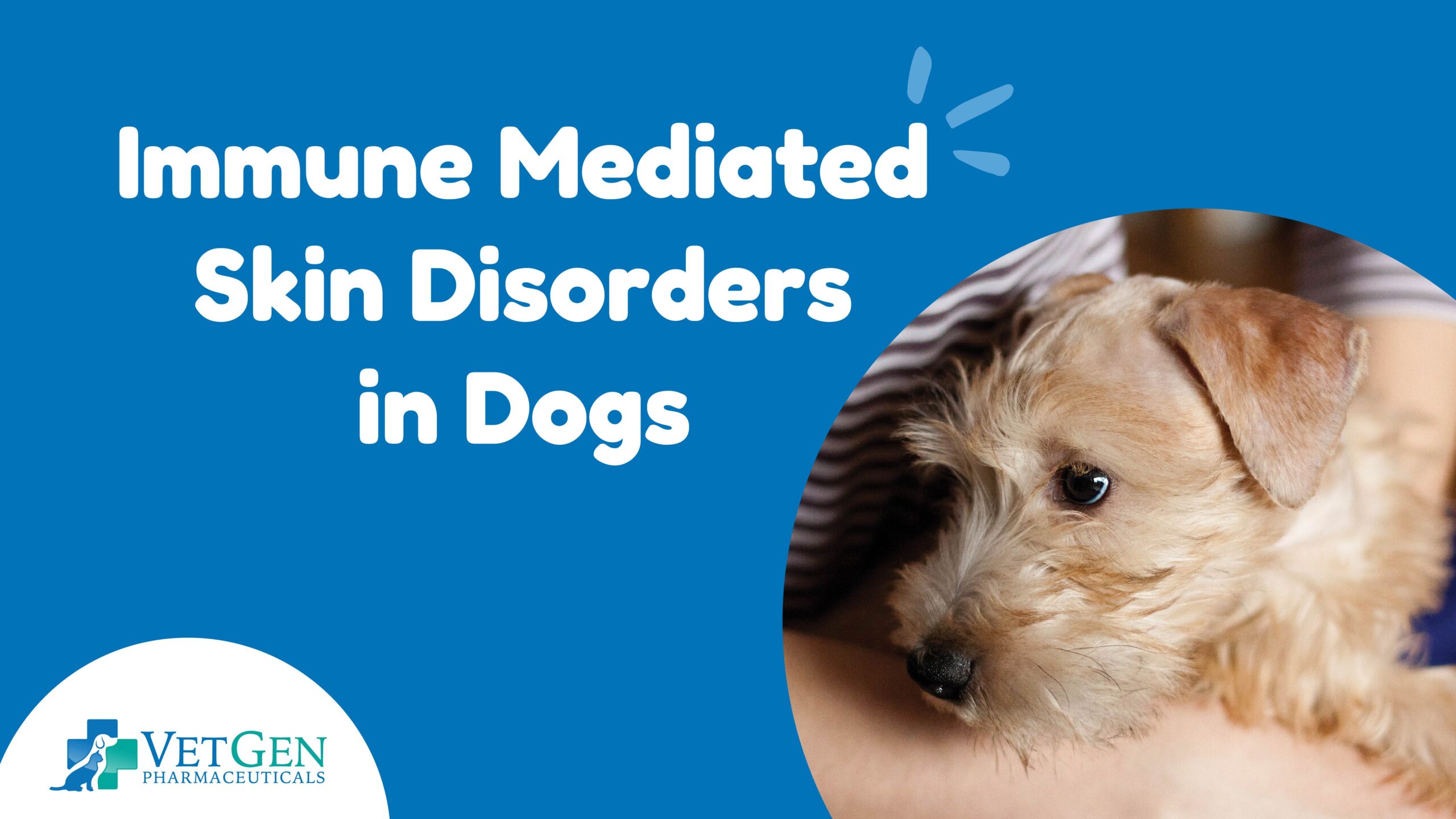The immune system exists to protect animals, including dogs, from infection-causing and disease-causing foreign invaders.
However, there are some instances where the attack comes from the immune system itself.
More specifically, immune cells malfunction and begin to attack the entire protective system thus causing illnesses.
This is known as an autoimmune disease.
In other words, your dog’s body is unable to tell its own body’s healthy cells from foreign cells – which leads to the destruction of normal tissue.
While the cause of the malfunction (autoimmune disease) often remains uncertain, we do know that they can wreak havoc on several of your dog’s body systems.
These include, but are not limited to, muscular tissue, connective tissue, nervous system, endocrine system, digestive system, and skin cells.
This article is going to go into further detail on skin disorders arising from autoimmune diseases in dogs – also referred to as immune-mediated skin disorders.
We will also briefly highlight the best dog supplements for dry skin to help relieve symptoms and discomfort.
A Word on Treatment of Autoimmune Skin Disorders

Experts believe that environmental pollutants, and genetics, may play a primary role in causing autoimmune skin diseases, and exposure to adverse ultraviolet radiation acts as the trigger or catalyst.
Some studies have also linked autoimmune skin diseases such as pemphigus complex, to prescription drugs your dog may take.
However, one thing remains unchanged, and it’s that immune-mediated skin disorders must not be left untreated.
Their persistence may sabotage the healthy functioning of other body systems.
The likely first line of treatment for immune-mediated skin disorders is immunosuppression.
Vets may prescribe drugs for your dog to help mitigate the adverse reactions within their immune system that are causing the autoimmune skin disorder.
Some of the most common drugs you will see here include dexamethasone, prednisone, azathioprine, cyclosporine, and chlorambucil.
Sometimes, your vet may prescribe these drugs in conjunction with antibiotics if there is a lingering bacterial infection.
If autoimmune skin diseases still prove to be persistent, you may want to consider daily supplements for your dog.
One of the best dog supplements for dry skin offered by VetGen Pharmaceuticals is Maximum Skin & Coat Supplement.
It is great for maintaining a healthy coat on dogs’ fur and is also instrumental in relieving inflammation, itching, skin breakouts, excessive shedding, and dry skin in general.
Let’s go over some of the most common immune-mediated skin disorders in dogs.
The Most Common Immune-Mediated Skin Disorders

Albeit rare in dogs, immune-mediated skin disorders commonly manifest in one of the following ways:
- Pemphigus Complex
- Lupus Complex
- Vasculitis
- Bullous Pemphigoid
1. Pemphigus Complex
This is a group of diseases known to attack dogs and other pets; usually appearing in the form of blisters and painful ulcers.
They include Pemphigus Foliaceus (PF), pemphigus Vulgaris (PV), Pemphigus Erythematosus (PE), Pemphigus Vegetans, and Paraneoplastic Pemphigus (PNP).
These complexes are a result of the immune system producing antibodies that attack the regions between mucosal tissues and the skin – also known as mucocutaneous junctions.
Think of the eyelids, anus, lips, and nostrils.
The most common form of pemphigus complex in dogs is pemphigus foliaceus (PF) and pemphigus erythematosus (PE).
Note that the latter is considered a milder form of the former.
The following breeds are deemed to be at a greater risk for pemphigus complex:
Labrador retriever, Finnish spitz, Akita, dachshund, cocker spaniel, English bulldog, Chow chow, and schipperke.
2. Lupus Complex
In dogs, lupus does not cause systemic disorders.
That said, the breeds likely to develop a lupus complex are Brittany spaniels, Shetland sheepdogs, Siberian huskies, collies, and German shorthaired pointers.
2A. Systemic Lupus Erythematosus (SLE)
3. Vasculitis
In simple terms, Vasculitis is an inflammation of the blood vessels often caused by a drug reaction, vaccine, or infection.
4. Bullous Pemphigoid

Conclusion
Just remember that you are not alone.
Many people (even your veterinarian) may not have heard of these conditions, so you may need to help spread the word.
If you have any concerns about your pet’s health, talk to your vet.
They are the best source for an overall picture of your dog’s health and assess the role this disease plays in his system.
References
Malcolm Weir, DVM, MSc, MPH; Ernest Ward, DVM, VCA Hospitals (Updated 2021): “Autoimmune Skin Disease in Dogs”. Retrieved from
https://vcahospitals.com/know-your-pet/autoimmune-skin-disease-in-dogs
Jennie Tait, AHT, RVT, VTS (Dermatology), Guelph Veterinary Specialty Hospital, Today’s Veterinary Nurse (2019): “Immune-Mediated Skin Disorders of Dogs”. Retrieved from
https://todaysveterinarynurse.com/articles/immune-mediated-skin-disorders-of-dogs/






